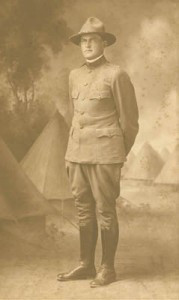Last week, Special Collections Outreach Librarian Sharon Byrd and Archives Assistant Jim Harris continued our ongoing process of conserving valuable items in our Special Collections, by taking eleven items to Etherington Conservation Services for appraisal and possible conservation. The staff at Etherington will work to rebind rare book with disintegrating spines, restore damaged pages by cleaning them in chemical bathes or by careful touch-up work, and/or build specialized boxes to house particularly valuable artifacts in a more secure and protective manner. While we were hand delivering the items to Etherington, Registrar Brian Crean was kind enough to give us a brief tour of their expert facilities.
In the “book lab,” conservators worked at individual stations repairing, cleaning, or rebinding damaged books employing specialized techniques and tools. Mr. Crean informed us that conservators training is somewhat similar to an apprenticeship: they start working on smaller, easier projects, working with less valuable materials, and as they gain experience they are given more and more challenging and valuable items to work with. Mr. Crean also presented several near-finished projects as examples of the work that the conservators do, including a rebound library book, and a binder containing laminated ledger pages removed from the original binding and protected, as the information was more important than the book itself.
Next, we were taken into the “paper lab” where technicians worked at fume hoods, bathing damaged paper in particular chemical bathes in order to clean them. Mr. Crean explained that the technicians are trained to have to have specialized knowledge of the chemistry of paper, to know what types of chemical cleaning different types of paper can withstand.
Third, we were shown the workshop in which books were bound, or in which the case of periodicals, bound together for the first time. A large warehouse-like space, their were many people at work throughout this assembly-line processing space.
Last, and certainly not least, we were shown the digitization lab. Jim, who has been responsible for some of our own digitization efforts at Davidson, was quite envious of the extremely high-end technology used to create extremely high quality images used in creating digital duplicates of artifacts sent to Etherington. (It was in the space that the digital copy of our own Book of Hours was created.)
In the end, it was a very interesting and worthwhile trip. While we wait to hear the status of our artifacts, I am left wondering how one gains the specialized training the conservators at Etherington have in both art and chemistry, necessary to conduct their very interesting work.

